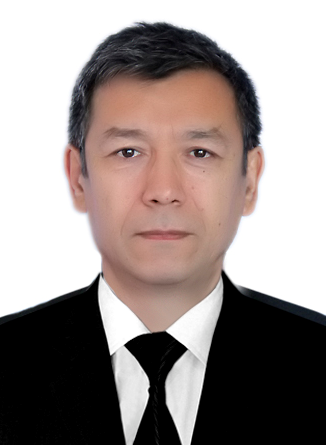Department of Nuclear Physics

Polvonov Satimboy - Head of department
100174, Universitet street 4, Olmazor district, Tashkent
Monday-Friday, 14:00 – 17:00
+998 93 556-10-84
e-mail: palvanov190@mail.com
In 1956, on the initiative of S.A. Azimova at the Central Asian State University (SAGU), the Department of the Structure of Substance was established, which for the first time in Central Asia began the training of specialists in the field of nuclear physics and cosmic rays. In 1957, the department created a problem laboratory for nuclear physics and cosmic rays. For three years, a 25-MeV betatron was installed in the problem laboratory and investigations were begun to measure the cross section for the interaction of gamma quanta with various nuclei (VS Masagutov), and a high-altitude station Kumbel was built at an altitude of 3160 m above sea level, Investigations of the characteristics of nuclear interactions and electromagnetic cascades by the most modern methods for that time in the energy range 1011-1012 eV have been started. (Yu.P. Kratenko).
From the department of the structure of matter, a separate Department of Radiation Physics was specially assigned to train personnel for the new Institute of Nuclear Physics, and the Department of the Structure of the Substance was renamed the Department of Nuclear Physics and Cosmic Rays with the orientation of training personnel not only in low-energy nuclear physics, but also in the field of nuclear physics high-energy physics and cosmic-ray physics.
Fundamental scientific research in the problem laboratory of the department was accompanied by a wide range of applied works on nuclear physics in Uzbekistan. In the seventies, the construction of a betatron laboratory of the department with a betatron at 50 MeV began. In the future, the Institute of Applied Physics of the TashGU was established on its basis, which was headed by T.M. Muminov.
For more than half a century, the department has trained over 15,000 nuclear physicists who work not only in Uzbekistan, but also in other republics of the former Soviet Union. More than 300 people received degrees. About 30 of them are doctors of sciences. Among the graduates of the department are such famous scientists as U.G. Gulyamov, A.A. Abdurazakov, R.B. Begzhanov. B.S. Yuldashev.
In different years the department was headed by Academician S.A. Azimov, A.A. Abdurazakov, R.B. Begzhanov, B.S. Yuldashev, T.S. Yuldashbaev, Professor A.M. Mukhamedzhanov, K.R. Nasriddinov, A.A. Abdumalikov, Associate Professor Z. Kanokov.
In 2005, the nuclear department and the chair of theoretical physics were united into one single department of nuclear and theoretical physics. On May 25, 2016, on the basis of the Decree of the President of the Republic of Uzbekistan No. PP-2527 "On measures to further improve the activities of the National University of Uzbekistan" on May 11, 2016, the Department of Low Energy Physics was organized. October 25, 2017 by the decision of the Council of the University number 3, the Department of Low Energy Physics was renamed the Department of Nuclear Physics. Associate professor S.R., Polvonov was elected as the head of the department. At present, there are 2 Doctors of Sciences, 5 Candidates of Science and 1 Academician working in the department. At the department there is a magistracy specializing in "5A140205 - physics of the atomic nucleus and elementary particles, accelerating technology." The undergraduates of the department under the leadership of Academician Tolib Musayevich Muminov are conducting scientific research on promising areas of modern nuclear physics.
Professors and teachers of the department together with the staff of the scientific complex "Unique objects" within the framework of the state scientific and technical program carry out scientific works on two fundamental and two applied grants.
Bachelor‘s degree disciplines:
- General Biophysics
- Atomic physics
- Nuclear and sub-nuclear physics
- Atomic, nuclear and subnuclear physics
- Nuclear Physics and Nuclear Technology
Computational Physics and Modeling of Physical Processes
- Modern problems of nuclear energy
- Dosimetry and Radiation Safety
- Accelerator physics
- Nuclear medicine
- Neutron Physics
- Applied Nuclear Physics
- High energy physics
- Atomic nucleus models
- Nuclear radiation detectors
Head of the department:
1. POLOVONOV SATIMBOY
2. MUMINOV TOLYB
3. KANAKOV ZOKIR
4. MAMAYUSUPOVA MUKADAS
5. RUZIMOV SHAMURAT
6. RAKHIMOV KHAMDAM
7. SOLOVYEV IVAN
8. HOLMATZHANOV BAKHTIYAR


